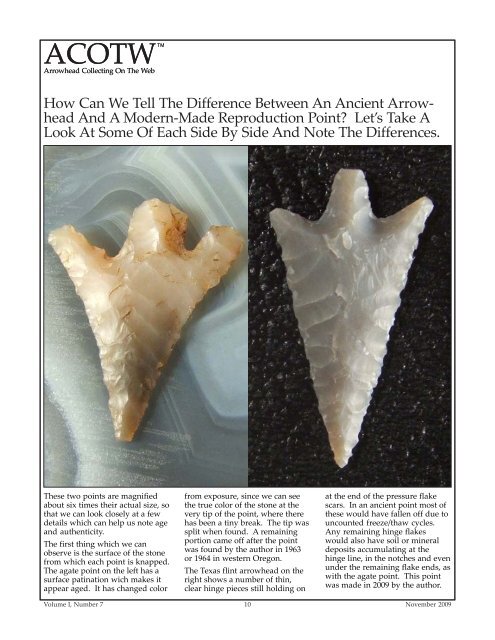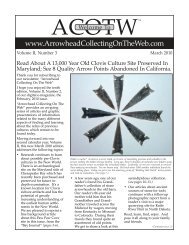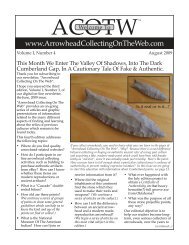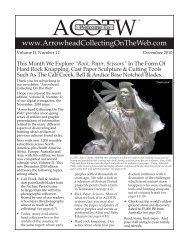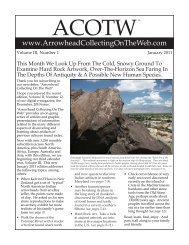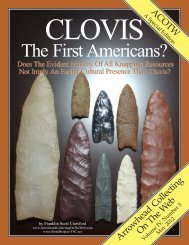STOP! - Arrowhead Collecting On The Web
STOP! - Arrowhead Collecting On The Web
STOP! - Arrowhead Collecting On The Web
Create successful ePaper yourself
Turn your PDF publications into a flip-book with our unique Google optimized e-Paper software.
ACOTW<br />
<strong>Arrowhead</strong> <strong>Collecting</strong> <strong>On</strong> <strong>The</strong> <strong>Web</strong><br />
<strong>Arrowhead</strong> <strong>Collecting</strong> <strong>On</strong> <strong>The</strong> <strong>Web</strong><br />
TM<br />
How Can We Tell <strong>The</strong> Difference Between An Ancient <strong>Arrowhead</strong><br />
And A Modern-Made Reproduction Point? Let’s Take A<br />
Look At Some Of Each Side By Side And Note <strong>The</strong> Differences.<br />
<strong>The</strong>se two points are magnified<br />
about six times their actual size, so<br />
that we can look closely at a few<br />
details which can help us note age<br />
and authenticity.<br />
<strong>The</strong> first thing which we can<br />
observe is the surface of the stone<br />
from which each point is knapped.<br />
<strong>The</strong> agate point on the left has a<br />
surface patination wich makes it<br />
appear aged. It has changed color<br />
from exposure, since we can see<br />
the true color of the stone at the<br />
very tip of the point, where there<br />
has been a tiny break. <strong>The</strong> tip was<br />
split when found. A remaining<br />
portion came off after the point<br />
was found by the author in 1963<br />
or 1964 in western Oregon.<br />
<strong>The</strong> Texas flint arrowhead on the<br />
right shows a number of thin,<br />
clear hinge pieces still holding on<br />
at the end of the pressure flake<br />
scars. In an ancient point most of<br />
these would have fallen off due to<br />
uncounted freeze/thaw cycles.<br />
Any remaining hinge flakes<br />
would also have soil or mineral<br />
deposits accumulating at the<br />
hinge line, in the notches and even<br />
under the remaining flake ends, as<br />
with the agate point. This point<br />
was made in 2009 by the author.<br />
Volume I, Number 7 10<br />
November 2009


